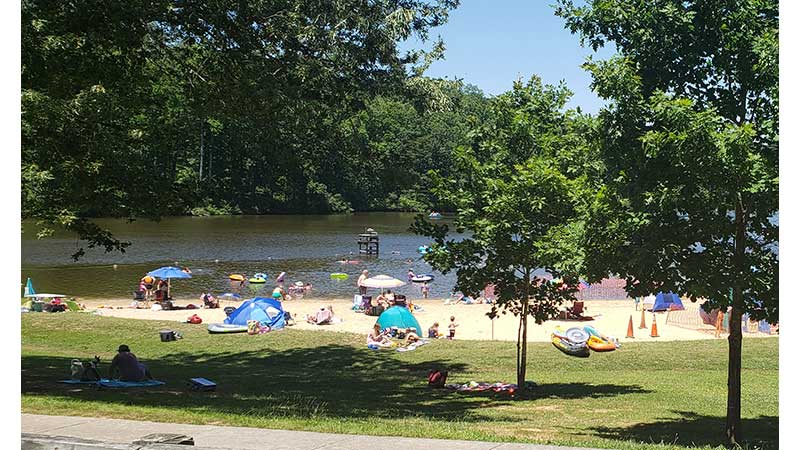STEPS reimagines regional homeless project in Farmville
Published 6:26 am Wednesday, May 3, 2023
|
Getting your Trinity Audio player ready...
|
FARMVILLE – Originally it was proposed as a village of tiny homes, set up in Farmville. Now the project set up by the nonprofit STEPS to help the homeless is changing and growing. The concept is now to build a 60 to 80 unit apartment building, with an emergency shelter housed on one floor and the rest serving as housing for homeless residents. As for where it would be built, that’s still up for discussion.
“We haven’t finalized a property yet,” said Shawn Rozier. He serves as Vice President of Housing for STEPS. “There’s a piece of property on West Third Street (in Farmville), the old Oakwood Homes property. That’s something where Virginia Supportive Housing will be in touch with the owner. We’re also looking at if other properties can be purchased.”
Once STEPS and their partner nonprofit, Virginia Supportive Housing, locate a spot for the project, then the rest of the work starts. First, they have to go through the special use permit process, to be able to build in Farmville. Then, assuming the permit is approved, they’ll apply for tax credits next year, to hopefully draw in private investment, while work starts on site prep.
Who can apply with STEPS
The one question STEPS members repeatedly encounter is who would be allowed to move in, once the building goes up. The answer is pretty clear.
“You would have to be literally homeless, with no place fit for human habitation to stay,” Rozier said. “This means someone who doesn’t have the resources to pay for a hotel. They have nowhere to go and no resources to shelter themselves. If you do have a place or someone is willing to take you in, you wouldn’t qualify for this.”
Now, the followup that seems to arise is how can you tell if someone is actually homeless. Is there a way to verify it? Rozier says yes.
“We ask for three names and contact information for individuals who know the person’s situation,” he said. “We try to verify as much as we can.”
Also, to be clear, the housing is supportive housing, not long-term. Now what does that mean? Think of it like a halfway house. It’s a temporary place for people to use to get back on their feet.
“There is not a specific time limit, but we will provide services with the goal of them moving on to permanent options as soon as they are able,” Rozier said. “They start out with a one year lease that will have opt-out clauses if they find permanent housing to move to sooner than that.”
A regional need
That’s so there’s enough room to address the very real need, both in Prince Edward County and across the region. From July 1, 2020 to June 30, 2021, STEPS sheltered 368 individuals in 191 households. Then STEPS helped 359 individuals in 197 households from July 1, 2021 to June 30, 2022. And it’s not just from one county. People from Amelia, Buckingham, Cumberland, Lunenburg and Nottoway also took advantage of the service.
“We were very very busy, trying to make sure our homeless had a place to stay,” Rozier said. “I think we demonstrated the need for the service.”
It’s not just a problem in this region. In Central and Southside Virginia, on any given night an estimated 816 people are homeless. Across the entire Commonwealth, according to the Department of Housing and Urban Development (HUD), 5,957 people were homeless last year. The number one reason given, according to HUD officials, was a lack of affordable housing and low wages.
STEPS going from county to county
This spring, Rozier and other members of the STEPS staff have been going from county to county, giving updates on their services. They’ve also been asking for some help in putting this apartment complex project together. They asked for and received $75,000 from Nottoway County. Prince Edward County also paid $100,000. They’re requesting $100,000 from the town of Farmville, while only asking $50,000 each from the counties of Amelia, Buckingham, Cumberland and Lunenburg.
“It’s based on the shelter numbers,” Rozier said, of the amount each government is being asked to give. “We look at how much the homeless from those counties are using our current programs.”
Currently, if all the requested governments provide funding, that’ll add up to $475,000. And yes, Rozier is well aware that’s not enough.
“While these funds won’t fund the entire project, it’ll give us a good match and demonstrate to other investors the commitment of the region,” he said.
That’s where he hopes private investment comes in, once they get the tax credits. He’s also hoping to secure some state and federal grant funding to round out the final part.
What happens next?
The next step is securing a piece of property for the project. By the end of summer, Rozier hopes to have a contract in place.





